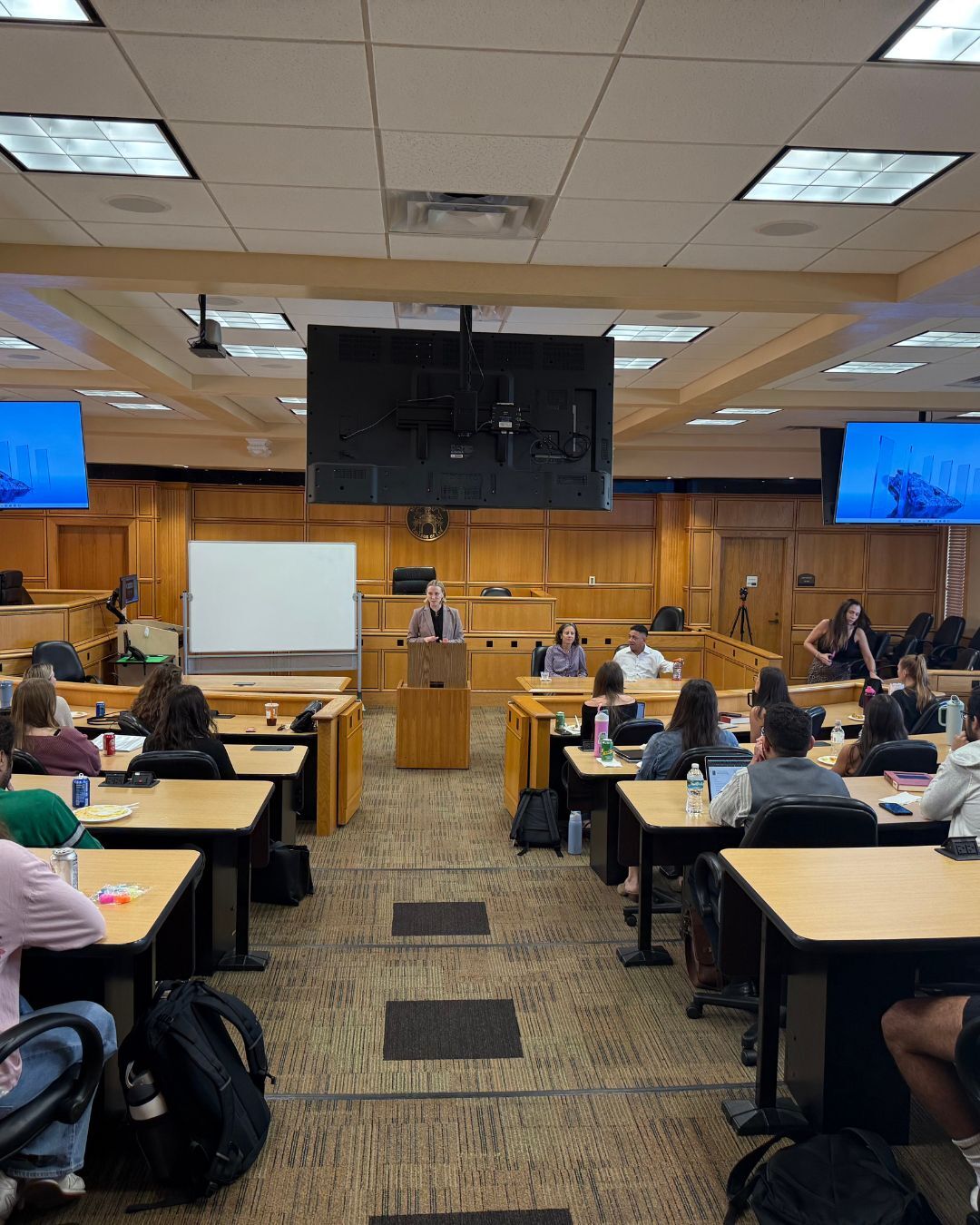No matter where you attend law school, there are particular subjects that everyone studies their first year: constitutional law, civil procedure, criminal law, torts, contracts, property law, and legal methodology. In these courses there are certain classic cases so well known, so fundamental and precedent-setting, that learning them is a rite of passage.
That’s why we’ve put together an introduction to three of the most famous court cases you’ll encounter in your first year in law school. From intricate interstate tax avoidance to explosions on a railway platform to seafaring cannibalism, these cases offer some startling glimpses into the human experience.
Tort Law
Palsgraf v. Long Island Railroad Co.
Tort law is a category of civil litigation that involves wrongful injury due to the negligent, reckless, or intentional acts of others. Establishing liability is central to any tort claim: tort law determines who is responsible when someone is harmed.
And deciding who (or what) is responsible for harm is the issue at the heart of Palsgraf v. Long Island Railroad Co., a famous case from 1928 in which a woman was injured on a railway platform following an unusually complicated series of events.
It was a warm summer Sunday morning on August 24, 1924 when Helen Palsgraf, a 40-year-old housekeeper, and her two daughters were waiting on the platform at a train station in Brooklyn to go to Rockaway Beach. A last minute passenger ran and jumped to get aboard a moving train leaving the station while railway workers helped to both shove him on and pull him up.
In the midst of the confusion, the man dropped a package wrapped in newspaper that fell on the tracks and caused an explosion. The blast was so loud it was heard blocks away and it was followed by a series of smaller explosions and pyrotechnic flashes.
Thirteen people were injured in the ensuing chaos, including Mrs. Palsgraf who was struck by a penny weighing machine knocked over in the tumult. The New York Times the next day reported that she was treated for “shock” – in addition to the bruising from getting hit, she later developed a stutter, had to quit her job, and became mute later in life.
It was later said that the package was full of fireworks, but police found another parcel of explosives left behind on the platform that were 16 inches long and several inches thick, raising questions about whether or not these were actually bombs. The man who dropped the package, who was with one or two other companions, was never identified.
So who’s at fault for Mrs. Palsgraf’s injuries? And for how much? She brought a suit against the Long Island Railroad and won at the trial and appellate levels, but their decisions were overturned in the New York Court of Appeals. The decision for the majority was written by Benjamin Cardozo, who went on to become a member of the Supreme Court of the United States.
Cardozo determined that the railroad wasn’t liable because Mrs. Palsgraf’s injuries weren’t a reasonably foreseeable consequence of the railway workers’ actions. “The court must ask itself whether there was a natural and continuous sequence between cause and effect,” Cardozo writes. “Was there a direct connection between them, without too many intervening causes? … Is the cause likely, in the usual judgment of mankind, to produce the result? Or by the exercise of prudent foresight could the result be foreseen?”
The court decided, in this case, no. The rule established by Cardozo’s ruling has since become known as the “zone of danger” test. It says that a defendant in a tort claim owes a duty of care only to reasonably foreseeable plaintiffs – i.e. people you could reasonably expect would be harmed by someone’s negligence.
Civil Procedure
International Shoe Co. v. Washington
If you’re running a company that conducts business across state lines, how much of a presence do you need to have in other states in order for you to be subject to the jurisdiction of their courts?
That’s the issue at the heart of International Shoe Co. v. Washington, a landmark Supreme Court case from 1945 that set a standard for determining state court jurisdiction that exists to this day.
The defendant, International Shoe Co., was a company headquartered in Missouri and incorporated in Delaware that did business in the state of Washington. Though they had no offices or warehouses in Washington, and they listed no registered agent for the state, they maintained about a dozen salespeople who would solicit orders and send them to the company office in Missouri where the sale would take place and the orders would be fulfilled. This was a common corporate strategy at the time to avoid paying sales or income taxes in another state.
However, the state of Washington sought to collect unemployment insurance on the salesmen who worked in the state. When International Shoe Co. refused to pay the assessment, the state sued them in a Washington court. International Shoe claimed this was a violation of due process because they had no permanent location within the state and thus the court had no jurisdiction over them.
After the court ordered International Shoe Co. to pay, the company appealed and the case eventually reached the U.S. Supreme Court in 1945. Since 1877, the case of Pennoyer v. Neff had already established a precedent that due process limited state courts to asserting in personam jurisdiction only over people who resided, owned property, or were otherwise physically present within a state. But International Shoe Co. v. Washington changed that precedent by establishing a new standard for the “minimum contacts” that need to exist with an out-of-state entity in order for a state court to have jurisdiction over them without offending traditional notions of fair play and substantial justice.
The precedent established by this case is still regularly cited. As more and more companies do business online, questions about jurisdictional authority over entities that operate primarily in other states is an ongoing area of litigation. The next time you’re doing your state taxes, and the form asks you to estimate the value of the goods you purchased from or in other states over the course of the year, you might think about International Shoe Co. v. Washington.
Criminal Law
R v. Dudley and Stephens
 Captain Dudley, Commander of the Mignonnette
Captain Dudley, Commander of the Mignonnette
journal paier Le Voleur, n 1436, 1885, p. 17, Public domain, via Wikimedia Commons
R v. Dudley and Stephens is an English criminal case from 1884 involving cannibalism on the high seas. It set a precedent that necessity for survival isn’t a defense for murder.
Four men – Tom Dudley, the captain, Edwin Stephens, Edmund Brooks, and Richard Parker, a 17-year-old orphan – set out to sail a 52-foot yacht called the Mignonette from England to Australia at the behest of a rich Australian lawyer named Jack Want. The boat wasn’t designed for long ocean trips, however, and Want had a difficult time finding a crew who would be willing to risk the voyage.
On July 5, 1884 the ship was hit by a wave that sank it halfway between St. Helena and Tristan da Cunha Islands in the South Atlantic. With only five minutes to save themselves, the crew managed to climb aboard a lifeboat with a few navigational instruments, some turnips, but no fresh water.
For weeks the men drifted on the open ocean, more than 700 miles from land. After surviving a shark attack (in which Parker fell overboard and had to be rescued), they were forced to survive on their own urine and the blood of a turtle they managed to catch. After about two weeks they began to discuss drawing lots to decide who would be sacrificed so the others could live. But by the 23rd Parker fell ill from drinking seawater, and the men decided it would be better to kill him to preserve his blood.
On the 29th the men were rescued by a German ship 990 miles east of Rio de Janeiro after they’d drifted over 1,000 miles in 24 days. They were taken aboard and brought back to England where British officials detained the men and charged Dudley and Stephens with murder (Brooks served as a witness for the prosecution).
Charges were brought partly because Dudley was unusually lurid and forthcoming in his account of the details. He told authorities that they’d spotted the German ship on the morning of the 29th “as we was having our breakfast we will call it.” Cannibalism prosecutions were rare, but British authorities were concerned about the danger it posed for leaving murder unpunished.
As an editorial at the time put it, “The English law… is adverse from entertaining the notion that peril from starvation is an excuse for homicide; and it would be dangerous to affirm the contrary, and to tell seafaring men that they may freely eat others in extreme circumstances, and that the cabin boy may always be consumed if provisions run short.”
The trial made headlines in Victorian Britain and popular sentiment was on the side of the sailors. Dudley and Stephens claimed that cannibalism for survival was “the custom of the sea,” but the fact that they’d skipped drawing lots to kill Parker before he grew any sicker gave their decision the appearance of premeditation.
Dudley and Stephens were both convicted of murder and sentenced to death, but their sentences were quickly commuted to six months in prison. In a famous opinion written by Lord Coleridge, Lord Chief Justice of the Queen’s Bench, the judge wrote that “To preserve one's life is generally speaking a duty, but it may be the plainest and the highest duty to sacrifice it… [A] man has no right to declare temptation to be an excuse, though he might himself have yielded to it, nor allow compassion for the criminal to change or weaken in any manner the legal definition of the crime.”
You Never Know Where a Case Might Go
Stetson University College of Law Professor Catherine J. Cameron loves reminding her students that you never know where a case could take you if it ends up dealing with a novel area of the law. In most of these famous first-year cases, she says, “This was probably just some random attorney on the corner who took up this case – and it just happens to end up being this landmark case that you’re reading about decades later. You could be that person!”
At Stetson Law you’ll cultivate the bedrock skills, knowledge, and practical experience to launch your legal career. Florida’s oldest law school, Stetson is ranked #3 in the nation for legal writing and trial advocacy by U.S. News and World Report. Working closely in courses with our dedicated faculty and with outside legal professionals in clinics and externships, Stetson students play a guiding role in shaping the practice of law throughout the country. Apply today!
Learn more about 1L cases on the Stetson Law podcast, Real Cases
Professors Catherine J. Cameron and Ashley Krenelka Chase sit down in episode 12 of the Stetson Law podcast, Real Cases: A Legal Podcast, to talk about the cases that shaped their research and their pedagogy. Both professors teach legal writing and research, where they encourage first-year students to test the boundaries of the subfields they study in their other courses.
Topics: Real Cases Podcast

.jpg)

